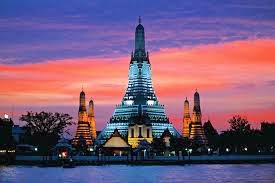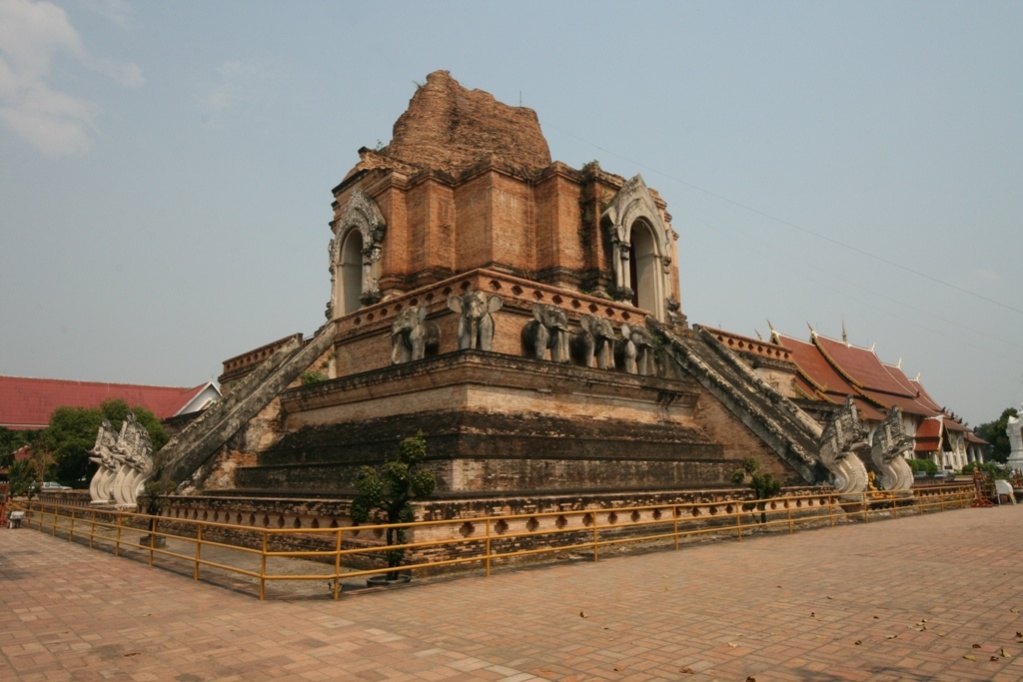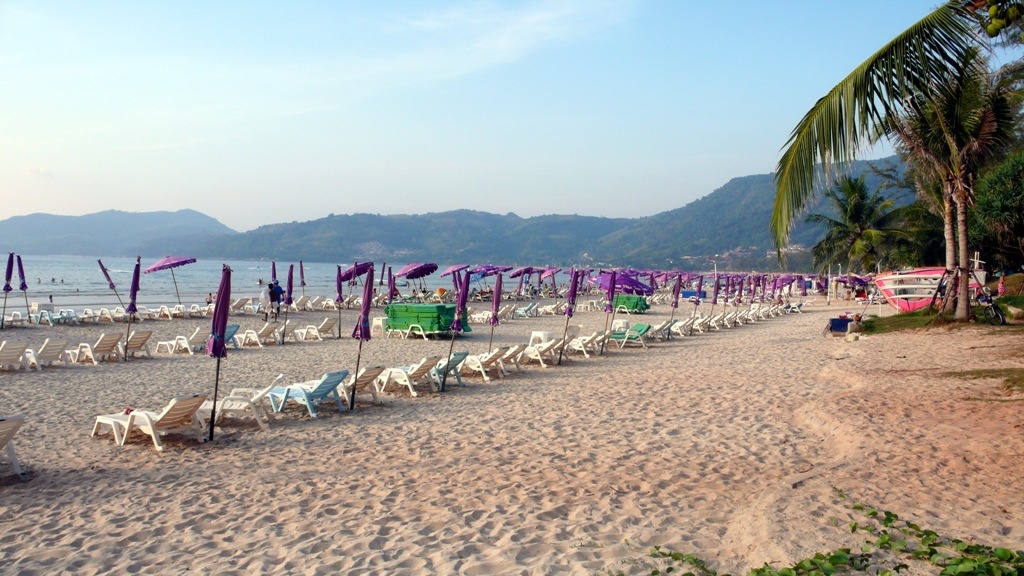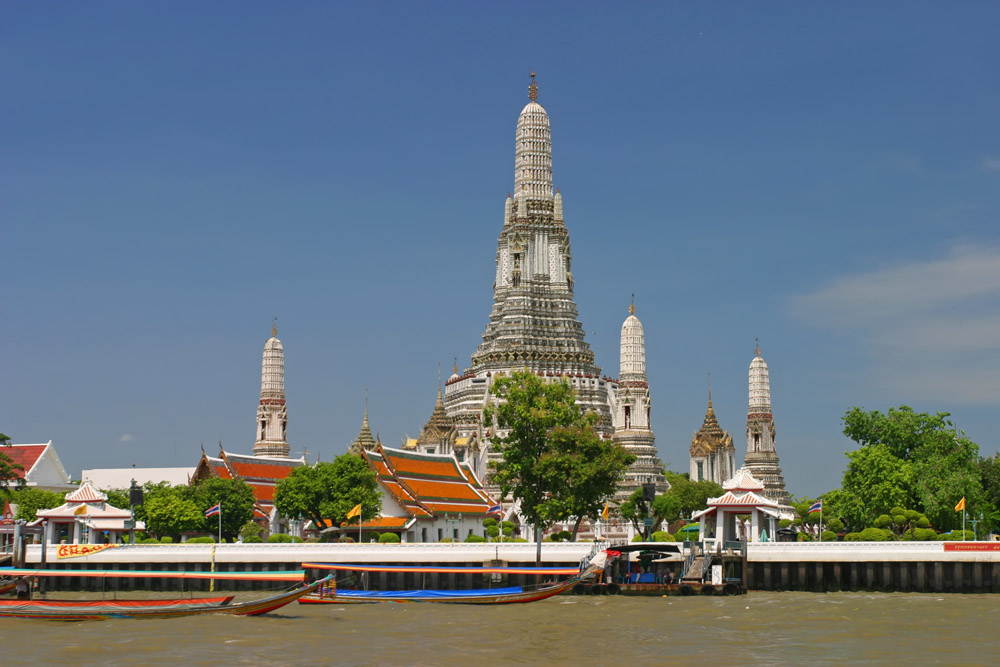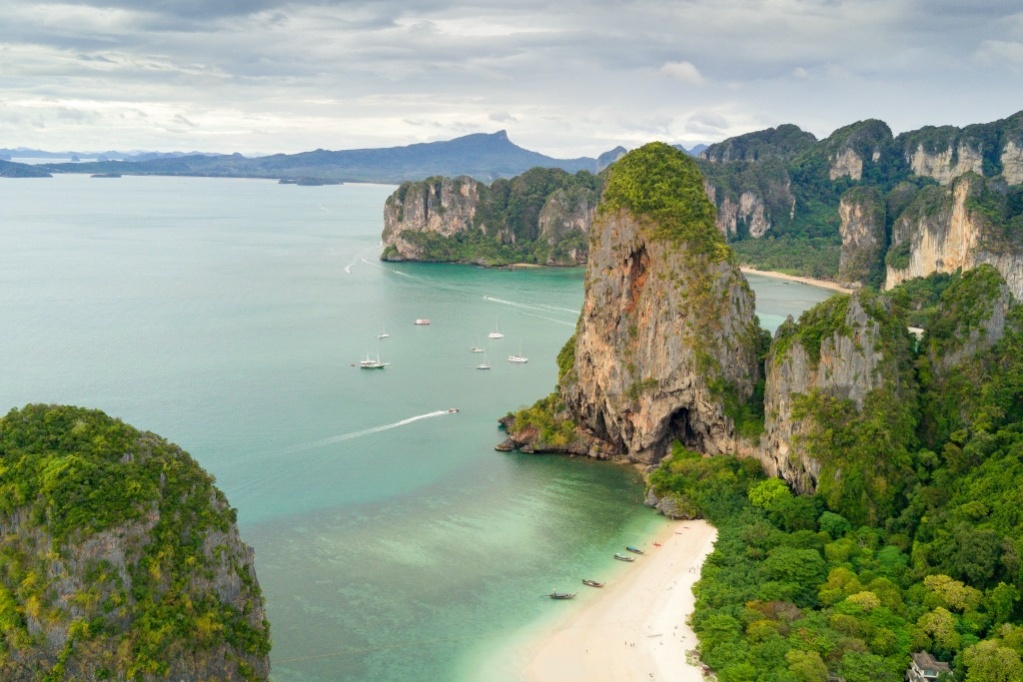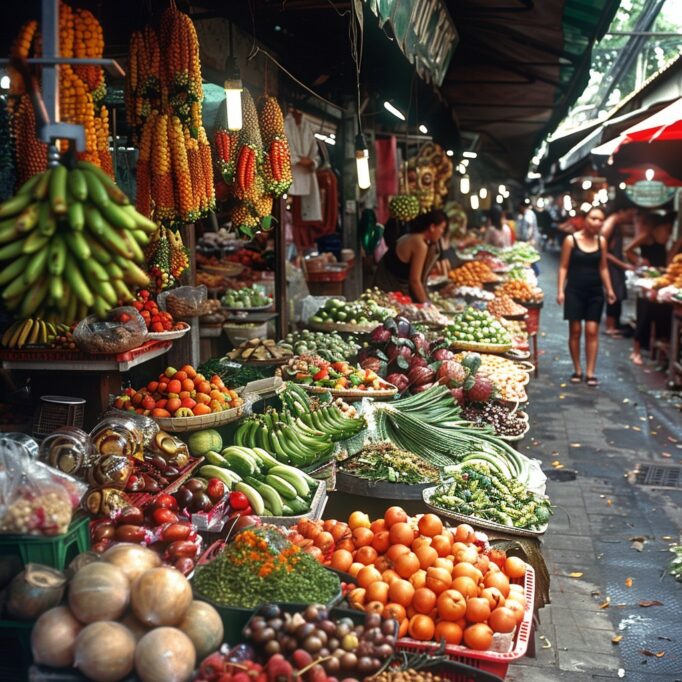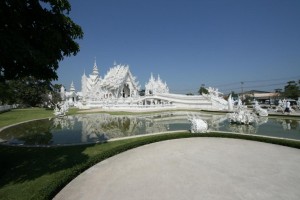THAILAND
TRAVEL GUIDE
HOW TO TRAVEL TO THAILAND
Uncover the Magic of Thailand: The Ultimate Travel Guide for Adventure and Relaxation. From the bustling streets of Bangkok to the tranquil beaches of Phuket, explore ancient temples, savor local cuisine, and soak up the rich culture. Ideal for first-timers and seasoned explorers alike, this guide ensures you experience the best of Thailand. Discover hidden gems, essential travel tips, and everything you need for a memorable journey in the Land of Smiles
Top 5 Things To See & Do In Thailand
Need To Know - Thailand Travel Guide
Five Quick Facts About Travelling In Thailand
- Thailand is a relatively safe and easy country to travel in, its a great country to start in if you have never travelled in Asia. However like anywhere it is important to exercise normal, sensible safety measures.
- Most westerners can enter Thailand visa-except for a specific period. Find visa information here
- Thailand has an exceptional transport network with all manner of modes venturing all over the country – see GETTING AROUND TAB.
- You will find English spoken in most cities, larger towns and major tourists spots, however it is advisable (and polite) to learn a few basic Thai words such as please, thank you and hello.
- Avoid mosquito bites. While Thailand has pretty much eradicated malaria some cases have popped up on the Burmese border in recent years. Dengue is endemic throughout Thailand. Use a repellent with deet in it and cover up in light coloured clothing to avoid mosquito bites.
Thailand is a tropical country and is hot and humid all year around with temperatures ranging from 28-35°C The northern mountains are cooler and can be cold at night.
Thailand has three distinct seasons;
- Cool: November to the end of February with little to no rain and day time temperature in the high 20’sC. If hiking in the mountains it can get quite chilly so pack a sweater or jacket. This is the busiest time to visit especially around Christmas and New Year’s so if planning to travel at this time it pays to book ahead.
- Hot: From March to June, it is hot and dry with temperatures as high as 40°C (104°F). My least favourite time in Thailand.
- Rainy: The rainy season runs from July to October with tropical monsoons across most of the country. This doesn’t mean it rains non-stop, but when it does it is torrential and flooding can occur.
Thai currency is the Baht. ATM’s are widely available across the country in larger towns and cities. If travelling remotely it is advisable to carry some cash.
Border Crossings
Thailand shares borders with;
- Laos
- Cambodia
- Burma (Myanmar)
- Malaysia
Citizens of most Western nationalities can enter Malaysia on a visa-exempt stay, while Laos and Cambodia both allow visa on arrival at most crossings. Burma requires an e-visa.
Thailand / Laos borders
Chong Mek / Vang Tao
A good choice if visiting far southern Laos. From the Thai side a bus runs regularly from Ubon Ratchathani to the border town of Chong Mek taking 1-1.5 hours. Occasionally this may require you to change buses in Phibun Mangsahan. At Chong Mek walk through each crossing which takes about 5 minutes then catch a songthaews from Vang Tao to Pakse, which take about one hour. Visa on arrival is available.
Mukdahan / Savannakhet
When travelling from Thailand catch a bus from Mukdahan which takes you across the Mekong via the Friendship Bridge II and on to the bus station in Savannakhet. Visa on arrival is available.
Nakhon Phanom / Tha Khaek
This river crossing is no longer open to foreigners who now must use the Friendship Bridge III via international buses that can be caught at the bus station in Nakhon Phanom and run all the way over to Tha Khaek. Visa on arrival is available.
Bueng Kan / Paksan
Cross the Mekong on the boat which departs from the Port near the Manolom Guest House (follow the signs). The boats leaves when it is full and costs about 60 Baht pp. or privately 360 Baht.
No Visa on arrival into Laos at this crossing.
Nong Khai / Vientiane
This crossing is the most popular crossing to enter Laos via the original Friendship bridge. International buses and tuk tuks will ferry you to the border crossing. Head to the official border crossing to complete any paperwork as many tuk tuk drivers will tell you they can take you to a ‘visa office’ which is a travel agent that pays them a commission.
Lao visa on arrival is available
Tha Li / Nam Hueng
A remote crossing that serves a daily international bus running from Loei (Thailand) to Luang Prabang (Laos).
Lao visas are available on arrival.
Chiang Khong / Huay Xai
A popular crossing for those travelling to Huay Xai to travel on a Mekong Slow Boat. Gone are the days when one crossed the Mekong by tiny boat to arrive at an insanely chaotic border control. Today the crossing is by the Friendship Bridge 4 which is organised and pain free and usually done by either bus or tuk tuk. Note border officials will charge you and extra ‘processing fee’ if crossing at this border.
Thailand / Cambodia Crossings
Aranyaprathet / Poipet
The busiest and most chaotic, disorganised border crossing in Thailand. Cambodian visa on arrival is available and e-visas are accepted. It can take up to 3 hours to cross so be prepared for a lengthy wait.
Had Lek / Koh Kong
The best crossing to use if heading to Sihaniukville and the surrounding beaches from the coast of Thailand. There are reports of Cambodian border officials at this border demanding large amounts of money for a visa, easiest way to avoid this is to have an e-visa.
Chong Sa Ngam / Anlong Veng
This crossing is very convenient to Anlong Veng but little else. There is no public transport once you cross into Thailand and you will have to hitch a ride to a sizeable town to connect with public transport.
Ban Pakard / Phsa Prum
Rarely used and a long way from anywhere on the Cambodian side. In Thailand mini buses run to Chanthaburi an hour away. Visas are available on arrival.
Ban Laem / Daun Lem
Another rarely used crossing it is 45 minutes from Palin on the Cambodian side. In Thailand mini buses run to Chanthaburi an hour away.
Thailand / Burma (Myanmar) borders
Visas for Burma are not available at the borders. You will need to obtain an E-Visa or paper visa depending on your nationality.
Mae Sai / Tachileik
Good for access to Northern Burma or Chiang Mai, Chiang Rai in Thailand or Laos. This is a busy borer crossing which has good onward transport on both sides. Day passes are available in Burma to allow access to the Tachileik border market
Mae Sot / Myawaddy
A popular option if travelling from Central Burma to Thailand’s lower North. Walk across the Moei River via the short Thai-Burma Friendship Bridge and then catch transport which is plentiful on both sides.
Burma visa NOT available at this crossing
Phu Nam Ron / Htee Khee
Use this border crossing for travelling between Bangkok and Dawei on the Andaman Sea coast in Burma, this is a remote and seldom used crossing that is 70 km west of Kanchanaburi and about the same distance east of Dawei. Limited public transport is available on both sides
E-visas and day passes are not available. You will need a paper Burma visa in your passport if coming from Thailand.
Ranong / Kawthaung
Good if you are travelling between the Thai and Burmese Islands this crossing is located right at the tip of Burma. To get to the crossing you will need to hop on a longtail boat. You can cross in to Burma with-out a visa on a two-week pass providing you stay within the area of Kawthaung
Thailand / Malaysia borders
There are at least six border crossings between Thailand and Malaysia which are open to foreigners. Most westerners can enter Malaysia visa-exempt.
Ban Ta Ba / Pengkalan Kulor
Sungai Kolok / Rantau Panjang
Open daylight hours
A popular crossing in southern Thailand with lots of transport on both sides including a train on the Thai side heading north. Before heading to this border it is advisable to check the current situation on the ground due to internal trouble in this region.
Betong
Open daylight hours
The Malay border is 7 km and is easily reached by share-taxi from Betong town.
Sadao / Changlun
This is one of the most popular crossings used for visa runs in southern Thailand, but for onwards travel it isn’t a great choice because of lack of transport on the Malay side. From Sadao, in Thailand, it is straightforward to take a bus or songtheaw onwards to Hat Yai. This crossing is open 24 hours.
Pedang Besar
Pedang Besar can be reached by bus, train or taxi from both sides. This crossing is open 24 hours and can be easily reached by minibus from Hat Yai. If you’re crossing on the train, you will need to disembark to clear customs.
Wang Prajan
Wang Prajan is near Thale Ban National Park in Satun province and fairly remote. Irregular minibuses run from Satun to the border and continue to Kuala Perlis.
Langkawi
To cross this border you will need to catch a boat to Thammalang pier (six km south of Satun) or the island of Ko Lipe, and on to the Malaysian island of Langkawi, or vice versa. The nearby boat crossing between Thammalung and Kuala Perlis in Malaysia is only open to Thai and Malay citizens.
Thailand has an extensive and easy to use transport network.
Plane
Bangkok is a major international hub and has 2 main airports.
- Suvarnabhumi Airport the main airport where most long haul flights arrive and depart from
- Don Mueang Airport where budget airlines, regional ind domestic flight operate fro.
There are a plethora of budget airlines that operate in the SE Asia region and flying both within Thailand and around the region is easy and cheap.
Train
Thailand has over 4000kms of rail lines that covers much of Thailand from Chiang Rai in the north to the Malaysian border.Thai trains have three main classes
- First Class (chan neung) – a two-berth sleeper with air-con on some trains.
- Second Class (chan song) – a 4 bunk sleeper with a reasonable level of comfort and half the price of first class.
- Third Class (chan saam) – the cheapest way to travel in Thailand. Cheap as chips and with a level of comfort to match (think wooden seats). Great fun for short trips but slow and uncomfortable on long journeys.
It is advisable to book if you want a sleeper.
Bus
Thailand has an extensive bus network with a bus running to just about every corner of the country. The government bus company is BKS (Baw Kaw Saw), known in English simply as the The Transport Company has stations in every province of any size. BKS buses anre usually clean, cheap and mostly reliable.
Private buses also run many of the same routes as the government buses although sometimes when using a private service you may end up in a cramped mini-van
The basic BKS bus types are:
- Local – relatively slow, often cramped and stops at every village along the way and you may share your space with a few chickens. Not ideal for long-distance travel, but may be the only cheap way to get around locally.
- Express (rot duan) – express buses are still pretty basic but don’t stop at every village (just most!) You will know the express bus by its orange colour. Size varies, with the largest having around 65 seats.
- Second class (chan song) – the second class bus will skip most stops, but often take a less direct route than 1st class / VIP / S-VIP. Identifiable by its blue and white with an orange stripe colour scheme this bus has usually 45-48 seats per bus, and often air conditioned. Stops frequently for toilet breaks.
- First class (chan neung) – First class buses take the most direct routes and make very few stops. Blue and white in colour, air conditioned, with more comfortable seats and a snack and drinking water included. Toilet on board for all but the shortest services.
- VIP – The VIP bus is the same as the First class bus with less seats meaning more leg room and reclining space further. Basic meals are included and freshly laundered shrink-wrapped blanket provided. This bis is blue and white or blue and silver and usually signed “VIP”.
- S-VIP – Super-VIP is very similar to VIP, with wider more comfortable seats. Great for overnight journeys.
Songthaew
A songthaew is a truck-based vehicle with a pair of bench seats in the back, one on either side — hence the name, which means “two rows” in Thai.
Songthaews are operated extensively as local buses and are generally the most economical way to travel shorter distances. Songthaews are generally caught the the local market.
Tuk Tuk
Tuk Tuks are found in every Thai city town and village and are the most common form of transport for short distances around town. Always make sure you negotiate your fare before getting in the Tuk Tuk.
Taxi.
Taxi’s are common in Bangkok but rare in the rest of Thailand. Uber op longer exists in Thailand however there is a similar company call Grab that operate in a similar way to Uber.
Thailand Travel Guide | How To Travel To Thailand
Magical Thailand Travel Guide: Your Ultimate Adventure
Introduction to Your Thailand Travel Guide
Welcome to our comprehensive Thailand Travel Guide. Whether you’re dreaming of a serene escape or an action-packed adventure, this guide is designed to help you navigate all that Thailand has to offer. As you travel to Thailand, you’ll find an incredible variety of experiences waiting for you, from the bustling streets of Bangkok to the tranquil shores of its southern islands. Our guide covers key information including top attractions, cultural insights, and practical tips to ensure your journey is smooth and enjoyable. You’ll learn about must-see destinations, local customs, and essential travel advice to make the most out of your trip. By following this Thailand Travel Guide, you’ll be well-prepared to immerse yourself in the vibrant culture and stunning landscapes that define Thailand. Get ready for a memorable adventure, whether you’re visiting for a week or a month, and let this guide be your trusted companion throughout your travel to Thailand.
Essential Tips for Your Travel to Thailand
Before setting out on your adventure, it’s crucial to be well-prepared. Our Thailand Travel Guide offers essential tips to enhance your travel to Thailand. Firstly, pack lightweight, breathable clothing suitable for warm weather. Thailand’s climate is typically hot and humid, so comfort is key. Ensure you have a valid passport and travel insurance, as these are essential for a hassle-free journey. Additionally, it’s helpful to carry some cash in Thai Baht for small purchases and local transactions, although credit cards are widely accepted in urban areas. Learning a few basic Thai phrases can also be incredibly beneficial, as it will not only help you communicate but also show respect for the local culture. Another tip is to be cautious with street food; while it can be delicious, make sure it’s from a reputable vendor to avoid any health issues. Our Thailand Travel Guide is designed to equip you with practical advice to ensure that your travel to Thailand is as enjoyable and stress-free as possible. With these tips, you’ll be ready to explore Thailand with confidence and ease.
Top Destinations in Thailand
Exploring Thailand offers an array of unforgettable destinations, and our Thailand Travel Guide highlights the very best. Begin your journey in Bangkok, the vibrant capital city known for its stunning temples, bustling markets, and lively street food scene. Don’t miss the Grand Palace and Wat Pho for a glimpse into Thailand’s royal history and architectural splendor. From Bangkok, travel north to Chiang Mai, a city renowned for its beautiful temples and rich cultural heritage. Chiang Mai also serves as a gateway to nearby hill tribes and lush landscapes. For a beachside retreat, head to Phuket or Krabi in southern Thailand. These areas boast some of the most beautiful beaches in the world, offering crystal-clear waters and white sandy shores perfect for relaxation and water sports. Whether you’re interested in exploring historical sites, enjoying vibrant city life, or relaxing on pristine beaches, our Thailand Travel Guide provides detailed recommendations for each destination to enhance your travel to Thailand experience.
Cultural Experiences to Embrace
One of the highlights of traveling to Thailand is the opportunity to immerse yourself in its rich and diverse culture. Our Thailand Travel Guide offers insights into cultural experiences that will make your travel to Thailand truly memorable. Start by experiencing a traditional Thai massage, renowned for its therapeutic benefits and relaxation. Participating in a Thai cooking class can also be a fantastic way to learn about local ingredients and cooking techniques while enjoying delicious food. Don’t miss out on witnessing a Thai festival or celebration, such as Songkran (Thai New Year) or Loy Krathong (Festival of Lights), which offer vibrant displays of local traditions and customs. Additionally, visiting local markets and interacting with residents can provide a deeper understanding of Thai life and customs. By embracing these cultural experiences, you’ll gain a richer appreciation of Thailand’s heritage and people. Our Thailand Travel Guide ensures you have the necessary information to fully enjoy and respect the cultural nuances during your travel to Thailand.
Practical Information for Your Travel to Thailand
To ensure a smooth and enjoyable trip, our Thailand Travel Guide includes practical information that’s crucial for any traveler. Understanding local customs and etiquette can greatly enhance your travel to Thailand. For instance, it’s customary to remove your shoes before entering temples and some homes. Always be polite and respectful, especially when interacting with monks and elders. Familiarize yourself with the local currency, the Thai Baht, and be aware of the exchange rates. It’s also a good idea to have a reliable map or GPS service, as navigating some areas can be challenging. Thailand offers a variety of transportation options, including tuk-tuks, taxis, and trains, each providing a unique way to experience the country. Make sure to stay hydrated and protect yourself from the sun, as the tropical climate can be intense. By following these practical tips from our Thailand Travel Guide, you’ll be well-equipped to handle everyday challenges and enjoy a stress-free travel to Thailand.

